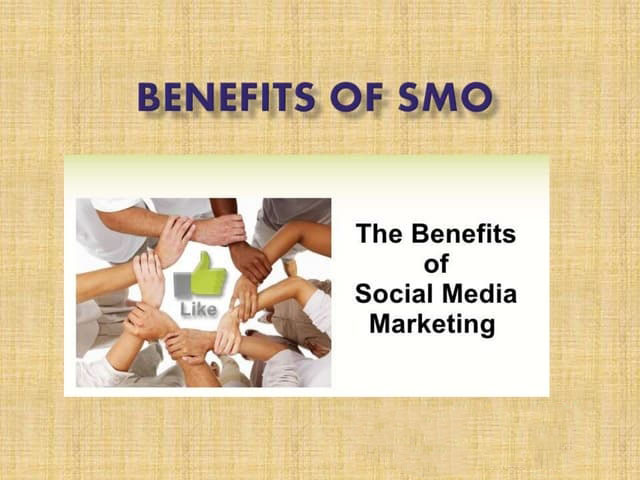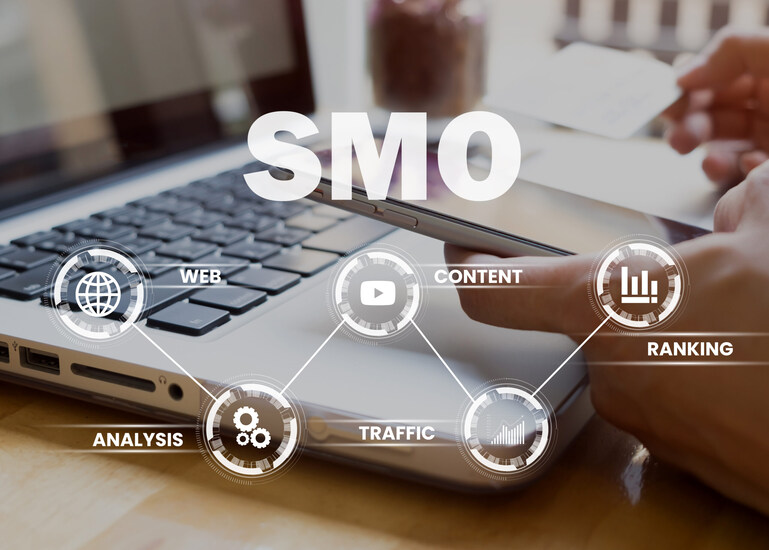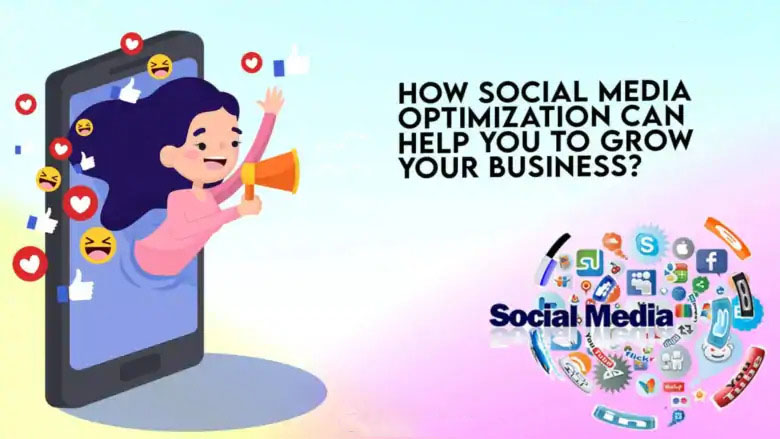SMO Full Form in Digital Marketing

Social Media Optimization (SMO) has become a strategy that companies utilize today to enhance their online presence and reach the right target audiences. Organizations use SMO to create a community, enhance brand loyalty, and drive significant traffic to their websites.
- Improved Decision-Making: Analysis of social media metrics helps companies make informed content and engagement choices.
- Cost Efficiency: SMO identifies the best-performing content, reducing wasted marketing costs.
- Customer-Oriented Approach: Social media activities focus on customer interests to increase content relevance.
- Always Measuring and Learning: Engagement metrics are frequently analyzed, promoting adaptation and optimization.
- Strategic Planning: Better analysis of audience interactions leads to improved market trend prediction and long-term success.
In this article, we delve deeper into SMO, explaining its significance in current business practices and outlining steps organizations can take to implement it in their digital marketing strategies.
What Is SMO?

Social Media Optimization (SMO) is a strategy designed to increase visibility and engagement within the social media sphere. It aims to generate website traffic and increase brand awareness. Organizations can effectively market products or services by analyzing audience behavior and preferences through social interactions.
Key Elements of SMO
- Content Quality: High-quality, engaging, and shareable content is crucial. Content that attracts and inspires shares significantly raises reach.
- Social Engagement: Engaging with follower posts builds community loyalty and encourages brand sharing.
- Choosing the Right Social Media Platform: Selecting the correct platform based on the intended audience ensures the content’s effectiveness.
- Analytics: Performance measurement tools help marketers adjust strategies based on audience preferences.
- Brand Consistency: A uniform brand voice across platforms generates awareness and trust among target audiences.
By focusing on these elements, businesses can establish a strong SMO foundation that enhances audience engagement and loyalty.
Benefits of SMO

- Improved Decision Making: Analytics tools reveal what resonates with the audience, helping refine content.
- Cost Effectiveness: Organic reach reduces marketing expenses and customer acquisition costs.
- Effective Communication: SMO promotes two-way communication between brands and customers, fostering collaboration and community.
- Increased Brand Recognition: Quality content and engagement boost brand awareness across social media.
- Improved Website Traffic: Optimized social media channels drive more website traffic, enhancing conversion rates.
SMO can greatly impact a brand’s visibility and engagement, delivering real-world value.
The Basic Principles of SMO

- Focus on Activities: Target specific social media activities, like posts and shares, to increase engagement.
- Link Activities to Metrics: Connect social media actions with metrics, such as engagement rates and conversions, to analyze effectiveness.
- Continuous Improvement: Regularly analyze trends and audience feedback to make strategic adjustments.
- Incorporate User-Generated Content: Encourage followers to create content, adding authenticity and fostering community participation.
- Use Paid Advertising: While organic reach is essential, paid ads help scale SMO and target demographics accurately.
Understanding these factors helps businesses build a robust SMO strategy that drives engagement and strengthens the brand.
How to Leverage SMO

- Review Current Activities: Assess your social media presence to identify strengths and weaknesses.
- Cost Drivers: Identify cost drivers, such as ad spends and content creation costs, to manage the social media budget effectively.
- Introduce Performance Metrics: Define metrics like click-through rates and engagement ratios to measure success.
- Empower Employees: Encourage employees to share company-related content and interact with customers, expanding brand reach and authenticity.
- Leverage Technology: Use social media management tools for automation, timely posting, and engagement data analysis.
These steps have proven useful for organizations in executing effective SMO campaigns that boost engagement and visibility.
Real-Life Examples of SMO
- Example 1: A retail brand launched a hashtag campaign encouraging customers to share their outfits on social media, increasing user-generated content and engagement by 150%.
- Example 2: A software company posted targeted content on LinkedIn, which boosted website traffic by 200% and increased lead generation.
- Example 3: A local restaurant shared daily specials on Instagram stories, which led to a 50% increase in footfall and bookings, demonstrating the effectiveness of real-time engagement.
These examples show how successful SMO can lead to positive business outcomes.
Final Thoughts
In a nutshell, SMO is an effective strategy for organizations aiming to increase their online presence, engagement, and brand recognition. By leveraging social media knowledge, allocating resources for content creation, and consistently improving, businesses can unlock immense potential in their operations and decision-making processes.
With SMO principles, organizations can achieve:
- Higher Brand Awareness: Expanding brand presence across social media channels.
- Greater Customer Interaction: Building meaningful relationships with customers fosters loyalty and community.
- More Traffic: Optimized social media channels drive more traffic to websites, potentially boosting conversion rates.
Now is the ideal time to adopt SMO for organizational growth. Start today to transform your digital platform into a driver of successful business results!
